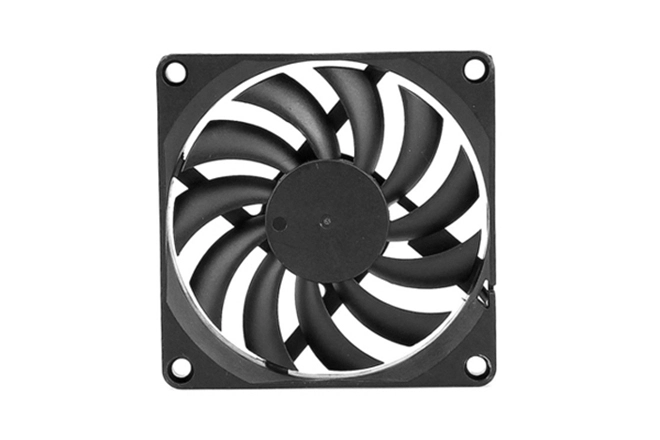

DC cooling fans are widely used in computers, servers, electrical appliances, industrial machinery, and other applications. Their primary function is to reduce device temperatures, enhance cooling efficiency, and ensure stable operation. Compared to traditional AC fans, DC cooling fans offer higher efficiency and precision, with their operation closely tied to the fundamental principles of DC motors.
Rotor: Includes the motor shell, magnetic strip, shaft, and fan blades.
Stator: Composed of enameled wire, coated silicon steel sheets, bearings, Hall-effect sensors, a driver circuit board, and the central shaft.
Motor: Comprises a permanent magnet rotor, multi-coil stator windings, position sensors, and an electronic commutation drive control circuit.
Frame: Serves to secure all components and ensure stable operation of the fan.
The core operation of a DC cooling fan is based on the principle of electromagnetic induction, wherein an electric current passing through a conductor generates a magnetic field, driving the fan's rotation. This can be better understood through Ampere’s right-hand rule: when current flows through a conductor, it produces a magnetic field. When placed in a fixed magnetic field, the conductor experiences attraction or repulsion forces, resulting in motion. This principle is applied directly in DC fans.
The rotor of a DC fan contains magnetic components, while the stator is composed of two sets of coils wound around the core, encased in silicon steel sheets. When DC current flows through the coils, they generate a magnetic field based on the current's direction. With precise control from the electronic commutation circuit, the two sets of stator coils alternately create a changing magnetic polarity, ensuring continuous rotation.
The magnetic poles generated by the stator interact with the magnetic field of the rotor's components, producing attractive or repulsive forces. When these forces exceed the static friction of the rotor, the fan blades begin to rotate. In this process, the Hall-effect sensor plays a critical role by continuously monitoring the rotor's position and feeding data to the electronic control circuit. This ensures precise current commutation and stable operation of the fan.
Once the fan blades start rotating, air is drawn into the fan and accelerated through the blades, dissipating the heat accumulated within the device. DC cooling fans typically operate at high speeds with strong air pressure, effectively removing heat and lowering the device’s operating temperature. This prevents overheating, which could damage electronic components or other precision parts.
The DC cooling fan working principle relies on electromagnetic induction and the interaction between electric currents and magnetic fields. Through precisely engineered motors and electronic control systems, DC fans deliver efficient, low-noise, and energy-saving cooling performance.
Their applications are indispensable across various electronic devices, particularly in areas requiring effective heat dissipation, such as computers, cases, and instrumentation. DC cooling fans not only ensure stable device operation but also contribute to the longevity and reliability of electronic systems.

